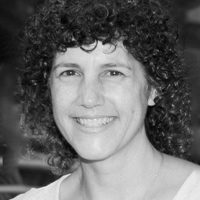Pediatric Seating
I work with a lot of children in my practice, but I do see adults as well. I love working with children. There are some very unique aspects with this population that we need to keep in mind.
Unique Aspects of this Population
First is growth. This is something that is easy for us to think of, but there are other considerations we need to keep in mind. Children who require wheelchair seating or seating in some sort of mobility base have a lot going on during those years besides growth. It is not uncommon for children who have increased tone due to conditions like cerebral palsy to be undergoing tone management procedures over the years. These will have an impact on what their seating is going to look like and what their seating requirements may be. This can directly impact the amount of postural support that is required. Tone management can include oral medications, a baclofen pump, and injections. Some of the children we work with may have progressive conditions such as children with spinal muscular atrophy. It is important that we are meeting their needs today, but keeping in mind future needs. Other progressive conditions that are common in childhood include Duchenne’s muscular dystrophy.
As someone grows, they do not only get longer or sometimes wider. People who have increased muscle tone, in particular, can have range limitations that occur along with that growth. We have a bone that is getting longer thus causing a tight muscle. That can lead to loss of range and also impact how the bone itself grows and in which direction it grows. This may cause orthopedic changes.
Mobility Bases
Pediatrics seating is also based on the mobility base that the child is using. With our youngest clients, this can include adaptive strollers. As they grow, a variety of wheelchairs can be used; some of these are specifically designed for young children. When we are working with children, we might have to accommodate children who are just being discharged from the neonatal intensive care unit. We may have to fit a chiled the size of a full-term newborn all the way through adult size. I have a 14-year-old of my own who is already, and has been for a while, taller than me. We have to work with an entire range of sizes. We have to make sure to accommodate this if there is available growth, both in the seating system itself and in the mobility bases that are supporting that. The mobility base usually has more available growth in it than the seating system. It is not uncommon for the seating system to have to be replaced before the mobility base.
It is important that the seating that we choose is flexible and we can make changes to it, not just in size, but sometimes in the amount of postural support that is provided or in the seating angles. This can help us accommodate changes, such as increasing weakness with progressing conditions or post-orthopedic surgeries like a varus derotation osteotomy (VDRO) or a spinal fusion. A child who receives a G-tube may suddenly gain a large amount of weight. It may not seem like a large amount of weight to you or me, but it could be a significant percentage of their own body weight, which can change the dimensions that are required in the seating system. Again, tone management and orthopedic changes can be very common in this population and can have a direct impact on seating.
